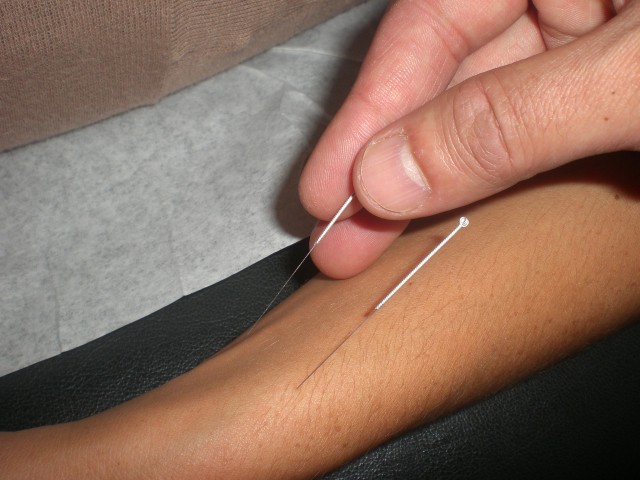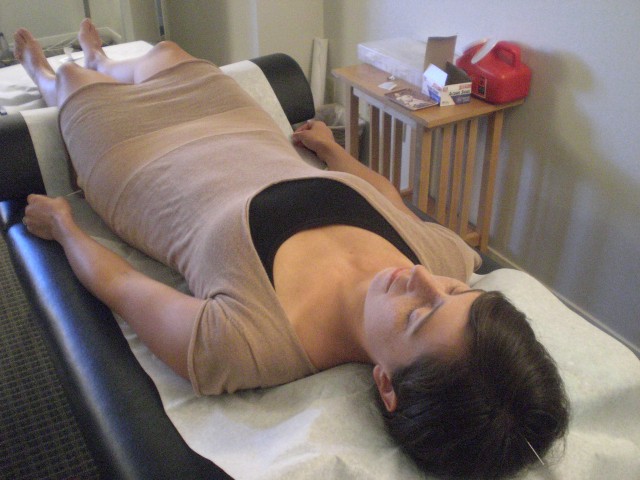Frequently Asked Questions
No, it shouldn’t. When most of the patients come to my clinic for pain relief, why would I inflict additional pain to them? Any acupuncturist should be well-trained with the technique of needle insertion that is painless and safe. Needles are nearly as thin as a hair, and the most commonly used needles are one inch long. They go in about one tenth to two tenths of an inch in most cases. Depending on the area (thick muscle and adipose layers), we use longer needles for deeper insertion, but they are still very thin. Acupuncture needles are never as thick as a hypodermic needle.

The first visit is longer than subsequent visits (90 minutes versus the usual 60 minutes). This visit begins with an extensive interview in which we will discuss your current concerns, your medical history, and your health in general. I will observe your tongue and check the quality of your pulse for diagnostic purposes. After inserting the needles, I will leave you to rest for about 20 minutes. In most cases, this is repeated, once lying on your back and again on your stomach. I will always be close by to hear you if you need something. You will not have to undress, but you are requested to wear a gown in some cases. When I have to work on upper back, shoulders, and hip joints, the area needs to be accessible. Patients always keep their undergarments on.
The best way to fully benefit from acupuncture is to be treated twice weekly for a few weeks. Please remember that acupuncture is not a miracle cure. Your own body does all the healing needed. Acupuncture is just an effective method of facilitating the healing process. For this reason, your body needs to be constantly reminded of what the healthy state feels like with the help of acupuncture. It seems to take three weeks or so for a body to adjust. When you choose to be treated once weekly, the healing process might take longer, but you and I will do the best to achieve the optimal health. Additionally, I recommend a monthly visit for maintenance. Most of my patients do so because, aside from pain relief, acupuncture has many other benefits such as improved digestion, improved quality of sleep, less painful and smoother menstrual periods, better moods, and so forth.
Acupuncture is good for muscular pain, joint pain, migraine headaches, digestive issues, infertility, irregular menstrual cycles, and PMS symptoms. World Health Organization reports that acupuncture is also beneficial for the following: alleviating post operative pain, nausea and vomiting resulting from chemotherapy, nausea during pregnancy, dental pain, anxiety, panic disorder, and insomnia.
The ancient Chinese considered the human body to be covered with streams of vital energy. Each of the streams (meridians) is associated with an organ system. Acupuncture is a way of influencing the energy flows of these meridians to create overall balance of the body. This is a classical view. Two thousand years ago, great Chinese philosophers had a tendency to describe natural phenomena in a metaphorical way.
To put the above description in a more modern context, I would like to introduce the more eclectic Japanese theory.
The brain, the nervous system, and the skin are all derived from the same embryonic layer. For that reason, these three units must communicate with each other. For example, the skin is considered a sensory organ because of all the important information that it sends to the brain via the nervous system, such as external temperature, pain, and touch sensations. Moreover, the skin conveys emotional responses to the brain; the same touch has a different meaning depending on whom the touch comes from. The skin is as intricate as the brain. By manipulating a response on the skin, the brain can be manipulated to create a cascade of whole body responses. For example, it is shown that more endorphin (a naturally occurring pain killer) is released after an acupuncture session.
The Chinese had over two thousand years of trial and error to systemize the mapping of meridians. The meridians are, in a way, reflex zones on the skin that are associated with organs. You may be aware of the band-like pain on the inside of an arm when someone has a heart attack. The exact location of the pain is the Heart channel in acupuncture methodology. Each point on a meridian has a different function, and an acupuncturist uses different point combinations and needling methods to create desired effects. Also, to treat muscle pain, the needle is inserted deep into a muscle layer to internally massage out the knots in the muscle tissue. The acupuncture points chosen for this purpose are often the junctions between a nerve ending and muscle tissue. Many people go “Ahhh…” after these points are needled.
From my experience, about sixty percent of the patients notice the difference right after the first session. The rest of the people usually report that they notice the effect on the following day. Most people report deep relaxation and a calmer mind. There are a small number of people who do not notice anything, unfortunately. There could be a variety of reasons, but the good news is that there is a minimal chance of side effects with acupuncture.

Absolutely! Needles are not reused under any circumstance.
No. All of the commercially distributed herbal products come from reputable U.S. based companies. The products have to meet the FDA and GMP standard. Personally, I only go through these reputable U.S. based companies.

